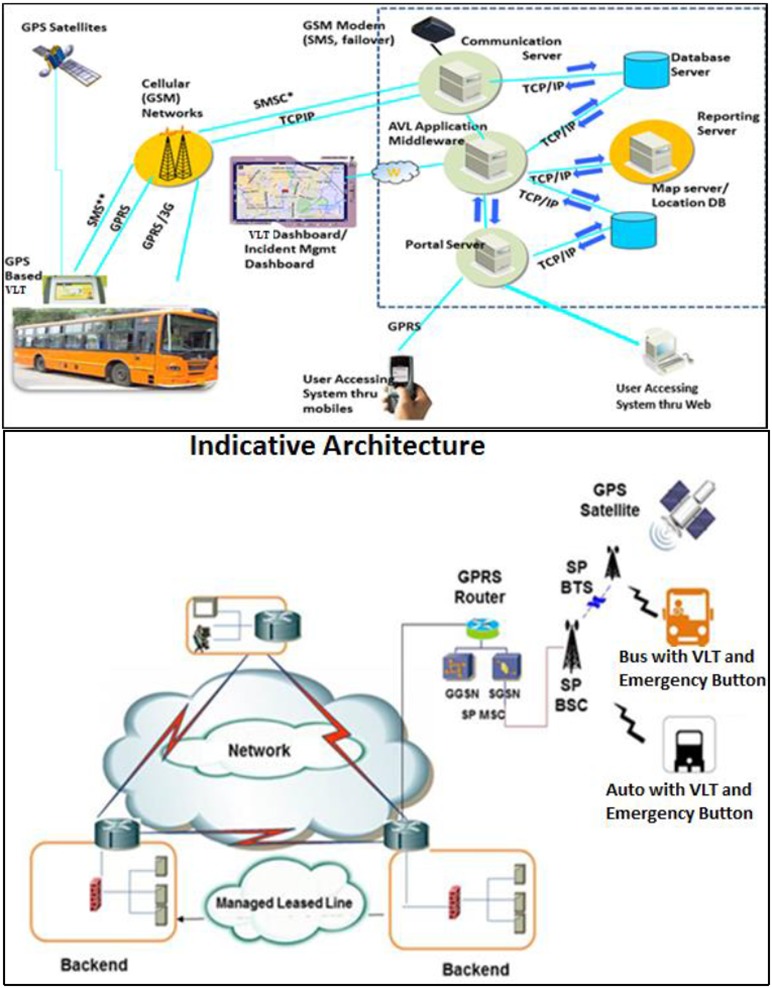The Government of India has passed a regulation that all public service vehicles as defined under Clause 35 (2) of Section 2 of the Act will have fitments of location tracking devices and one or more emergency buttons. The rule has been notified by Ministry of Road Transport and Highway (MoRTH) vide notification no. 817 dated 28 November 2016. The ministry has emphasised that the deadline is fixed, i.e. 1 April 2018. However, most of the states had not done much to meet the target. There is need for quick action from public transport agencies to achieve this target.
This regulation will come into effect from 1 April 2018 and will include state transport buses, taxis & other public service as defined under Clause 35 (2) of the Act . All taxis, buses and public transport vehicles will have to install location tracking device or GPS and an emergency button. The rule is not applicable to two-wheelers, three-wheelers, e-rickshaws and any transport vehicle which require no permit.
The vehicle tracking regulation will cover both newly manufactured vehicles and existing vehicles in the country. The vehicle tracking device and emergency button shall be fitted by the manufacturer or their dealer or the respective operator in accordance with AIS-140 by ARAI (Automotive Research Association of India).
As per the AIS-140 guidelines, safety and security functions shall be met by only single device that can be interfaced by external emergency buttons. The communications to Backend Control Server (Government authorized server) shall be done by device as per the protocol and functionalities.
Vehicle Location Tracking (VLT) shall
a) be capable for operating in L and/or S: band and include support for NAVIC/IRNSS (Indian Regional Navigation Satellite System) for devices installed on or after 1 October 2018. However, VLT devises shall be compliant as per other GNSS constellation in the interim period.
b) support standard minimum I/Os as mentioned: 4 Digital, 2 Analogue and 1 Serial Communication (e.g. RS232) for interfacing external systems (E.g. Digital input for Emergency request button interfacing).
c) be capable of transmitting Position, Velocity and Time (PVT data) along with heading (direction of travel) to a Backend Control Server (Government authorized server) at configurable frequency (5 sec during vehicle operation and not less than 10 minutes in sleep/IGN OFF)
d) be capable of transmitting data to minimum 2 different IP addresses (1 IP address for regulatory purpose (PVT data) and 1 IP address for Emergency response system.
e) On pressing of Emergency button, the system implementing VLT function shall send emergency Alert to the configured IP address(s). In the absence of GPRS network, the emergency alert shall be sent as SMS message along with vehicle location data to configured control center number(s).
f) have a unique identifier for identifying the VLT device and data. The unique ID shall be stored in a read only memory area so that it cannot be altered or overwritten by any person.
g) have an internal back-up battery to support 4 hours of normal operations and shall support over the air software and configuration update.
h) have an Embedded SIM. It should be designed to operate between 8VDC and 32VDC using vehicle battery input voltage range 12 /24Volts
i) have provision of secured data transmission to the Backend Control Centre from the devices through secured channel (e.g. secured dedicated APN).
Emergency System shall:
a) allow passengers or in-vehicle crew present in the vehicle to make an emergency request by pressing the emergency button provided.
b) shall be part of VLT system. An alert shall be sent to the Backend Control Server (Government authorized server) when emergency request is raised.
c) In absence of both GPRS and GSM networks and on pressing of Emergency Button, the system implementing VLT function shall store the emergency Alert. Once the GPRS or GSM is available, this alert information shall be sent on high priority to the configured IP addresses as per the communication protocol


